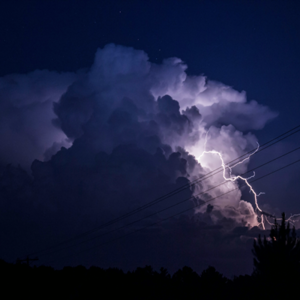

It's a powerful natural phenomenon that has the potential to be a deadly force of destruction. Lightning can create positive changes, too, as detailed in a previous article on lightning's role in the formation of life on Earth. A recent study also has revealed another beneficial side to lightning. A team of American scientists has uncovered how lightning works to create chemicals in the atmosphere which help to clean pollution out of the air.
The data on lightning's cleansing role was originally collected back in 2012 when a storm chasing NASA jet flew through thunderstorms over Colorado, Oklahoma, and Texas. In the lightning-filled clouds, they measured the concentration of chemicals called oxidants, the two main types being hydroxyl (OH) and hydroperoxyl (HO2). Hydoxyl, in particular, is so effective in oxidizing pollutants like methane, and allowing them to easily dissolve in rain drops and get cleared out of the air, that it has been dubbed the “detergent of the atmosphere.”
The reason why this data on lightning has only recently been reexamined is because scientists initially discounted the data, as the lightning studied was generating concentrations of oxidants in the thousands of parts per trillion, whereas previous observations had only measured lightning producing less than 10 parts per trillion. However, subsequent experiments in the lab have confirmed electricity's role in creating these larger concentrations of oxidants, than was previously thought possible.
The significance of lightning's role in cleaning atmospheric pollution worldwide, including chemicals which can exacerbate global warming, is still difficult to estimate, as this study was confined to the anvil and core of thunderstorms only over the United States. Early estimates have lightning producing anywhere from 2 to 16% of the world's hydroxyl. Subsequent studies of more thunderstorms and in more locations will be needed to improve these estimates.

